Mars Desert Research Station
Mission Summary
Crew 202 – MartianMakers
Dec 28th, 2018 – Jan 12th, 2019
Crew Members:
Commander and Crew Astronomer: Dr. Cesare Guariniello
Executive Officer: Denys Bulikhov
Crew Engineer: Kasey Hilton
Health and Safety Officer and GreenHab Officer: Jake Qiu
Crew Geologist: Ellen Czaplinski
Crew Journalist: Alexandra Dukes
See Mission Patch
Acknowledgements:
The Crew of MDRS 202 would like to express their gratitude to all the people who made this mission possible: our deepest thanks to Dr. Robert Zubrin, President of the Mars Society; Dr. Shannon Rupert, MDRS Director and Program Manager, who made us feel warmly welcome at MDRS campus; Atila Meszaros, Assistant Director, who for the first time experienced being the only resident manager of MDRS, and performed greatly with our crew; Dr. Peter Detterline, Director of Observatories, who trained and assisted our Crew Astronomer before and during the mission; David Murray, GreenHab Team Lead; Michael Stoltz, The Mars Society Liaison, Media and Public Relations; the Mission Support CapCom who served during our rotation: Sylvain Burdot, Johanna Kollewyn, Andrew Foster, Justin Dingman, Bernard Dubb, Samuel Cadavid, and Makiah Eustice; Purdue MARS, which initiated the crew selection for this mission; all the departments and people at Purdue University who supported this mission; and all the unnamed people who work behind the scene to make this effort possible, and who gave us a chance to be an active part of the effort towards human exploration of Mars.
Mission description and outcome:
MDRS 202 “MartianMakers” is the second all-Purdue crew at MDRS. This mission had an ambitious plan, and it was greatly successful. All crewmembers performed to the highest standards and provided good work on their research projects, as well as support to projects of the other crewmembers. With a little help from meetings and information provided before the mission, the crew adapted to life at MDRS very quickly, and even when tiredness began creeping in, the morale was always high, as demonstrated by a healthy number of smiles and happy faces up to the very last day. As expected, we found out that patience and flexibility are the most helpful qualities in a simulated mission where the crew lives in close quarters for an extended period of time. The research projects that required Extra Vehicular Activities (EVA) provided enough data despite very cold days, and the fresh snow which accumulated twice during the rotation and melted down leaving muddy trails behind. The research described below touched many aspects of human exploration of Mars, ranging from geology, microbiology, astronomy, and potential use of waste to the psychological and social aspects of the mission. The crew was also involved in various outreach projects, which is an important objective of MDRS.
As commander, I am extremely proud of this crew, which was capable to keep the highest level of fidelity and realism in the situation. The crew properly followed safety and research protocols, worked as a tightened group, and in the structured daily schedule was capable to mix long hours of research and exploration activities with personal and team-bonding time. The pace kept throughout the mission was adequate for the objectives proposed in the mission plan, but at the same time slow enough, as expected in a long-term Martian settlement. The crew began preparing their projects long before the mission, collected useful and interesting data during their time and MDRS, and has plans for use of the data after the completion of the mission, as well as ideas for laying foundations for continued collaboration of Purdue crews with the MDRS program and for supporting MDRS with products and manuals for future crews.
Picture 1: MDRS 202 Crew posing in front of the habitat with a "thank you" sign for the Mars Society. Left to right: Commander and Crew Astronomer Cesare Guariniello, Crew Journalist Alexandra Dukes, Crew Engineer Kasey Hilton, Health and Safety Officer and GreenHab Officer Jake Qiu, Executive Officer Denys Bulikhov, and Crew Geologist Ellen Czaplinski
Summary of Extra Vehicular Activities (EVA)
After being trained in the use of rovers and in the safety protocols for EVA, the crew had twelve excursions during rotation 202, two of which being traditional short EVA to Marble Ritual. The EVA served four research projects: study of mineralogy and regime of sand dunes, stress levels and decision making, autonomy for crew EVA, and radiological mapping of MDRS. Due to snow in the first days and mud in the last days, the crew could not reach the end of Cactus Rd in the East side, and Skyline Rim in the West side, but explored various areas of interest in the Morrison Formation and Dakota Sandstone. The crew optimized the time on the field, limiting the driving time to 15-25% of the entire EVA duration.
Table 1. Summary of EVA, indicating Sol of execution, duration, distance covered, and time percentage spent in the field
| EVA |
1 |
2 |
3 |
4 |
5 |
6 |
7 |
8 |
9 |
10 |
11 |
12 |
Total |
| Sol |
2 |
2 |
4 |
5 |
6 |
7 |
8 |
9 |
10 |
11 |
12 |
13 |
| Duration (h:mm) |
0:36 |
0:47 |
2:43 |
1:54 |
2:58 |
2:10 |
1:45 |
3:10 |
2:26 |
2:47 |
1:46 |
1:35 |
24:37 |
| Distance (miles) |
1.0 |
1.0 |
6.2 |
3.5 |
6.3 |
4.9 |
4.7 |
6.3 |
10.5 |
9.5 |
3.0 |
1.2 |
58.1 |
| % not driving |
89% |
88% |
82% |
89% |
85% |
75% |
77% |
83% |
73% |
79% |
81% |
100% |
Picture 2: Figure 2. Three-dimensional view of the EVA performed by MDRS 202 crew
Research Projects:
1.
Title: Fuzzy Logic Decision Making in support of autonomy for crew EVAs
Author: Cesare Guariniello
Description, activities, and results: The project compares decision-making based on a fuzzy-logic intelligent machine with decision-making by the crew when events occur during EVA. During the longest EVA, the Commander suggested potential events, including failed communications, rover failures, crew injury, unexpected environmental conditions, and asked the crew to describe what they would decide for the rest of the EVA in that situation, and why. For some events, the decision was unanimous (evaluate the criticality of the situation, then proceed), when the perceived risk was low, and the objective of the EVA were not even partially accomplished. Other events entered gray areas, in which the crew at times did not consider the potential risks to exceed the potential gain from continuing the EVA or moving to a secondary objective. In these cases, the decisions of the machine were more conservative.
2.
Title: Stress levels and decision making during Extravehicular Activity (EVA)
Author: Denys Bulikhov
Description, activities, and results: The project evaluates decision-making patterns at different level of stress, including calm conditions, after long EVA, and after the Cold Pressor test. This data will identify potential areas of danger due to misjudgment and faulty decision-making in conditions of stress. All planned data was collected for this experiment, and the first results have been evaluated. Due to a bug in the application used to analyze the data, final results will be available after the end of the mission, with an updated version of the application.
3.
Title: Study of microbial ecosystem in microgreens
Author: Jake Qiu
Description, activities, and results: The project studies the evolution of microbial ecosystems in microgreens treated with different types of water, to compare the community structure between different conditions and estimate the possibility that microbes introduced in the environment by astronauts develop any pathogenic strains. Multiple trays of microgreen were grown, and microbes were studied with a NASA DNA sequencer. Phenotypic properties were evaluated in-situ, while full results on microbial community require post-processing in laboratory that will be executed after the end of the mission.
Picture 3: MDRS 202 GreenHab Officer setting up microgreens for the experiment on microbial exosystems
4.
Title: Analysis of mineralogy and regime of sand dunes and fluvial processes
Author: Ellen Czaplinski
Description, activities, and results: many features in the MDRS area were studied during 10 of the 12 EVA, and sand samples were collected in various locations. The in-situ portion of the project was completed by collecting visible and near-infrared spectra of more than 90 geological samples in the area, mainly including clays (illite and montmorillonite) and gypsum. The work will proceed after the end of the mission by comparing samples collected in the field with samples taken in laboratory.
Picture 4: Crew Engineer Kasey Hilton points at a rock she just collected for crew geologist Ellen Czaplinski
5.
Title: Composting and recycling waste on Mars
Author: Kasey Hilton
Description, activities, and results: this project studied the waste produced at the habitat, to evaluate the nitrogen and carbon content. This is very important when planning to use the waste to create a compost pile, which would provide a way for waste to be reused and provide plants with nutrients. A healthy compost requires a 1:25 ratio of nitrogen-rich to carbon-rich waste. Human waste can be used to modify the ratio towards carbon-richer compost, therefore an anonymous journal of human waste production has been kept, in order to evaluate the amount of compost that could be produced. Due to the lack of carbon-rich waste and to the large amount of food, which is nitrogen-rich, the waste produced at the habitat resulted highly nitrogen-rich and would require human waste added to modify the ratio of nitrogen to carbon.
6.
Title: Classroom Outreach via asynchronous Q&A
Author: Alexandra Dukes
Description, activities, and results: Questions of interest about MDRS and living on Mars were prepared for the crew. Each crew member was videotaped answering the questions in a “73 questions” Vogue format, and the videos will be used for outreach after the end of the mission.
7.
Title: Messier objects for outreach
Author: Cesare Guariniello
Description, activities, and results: with the support of Dr. Peter Detterline and Dr. Shannon Rupert, the Crew Astronomer and Atila Meszaros helped improving the focus of the MDRS-WF telescope. In the months preceding the mission and during the mission itself, the Crew Astronomer captured and processed images of various deep-space objects, including M1, M31, M33, M42, M51, M78, IC405, the Rosette Nebula, the Horsehead Nebula, the Rosette Nebula, and comet C46P/Wirtanen. The images will be used for outreach and education.
Picture 5: M31 Andromeda Galaxy imaged with the MDRS-WF telescope
8.
Title: Radiological mapping of MDRS and surrounding areas
Author: Denys Bulikhov
Description, activities, and results: Addressing the problem of radiation on Mars, this project simulated a possible activity that astronaut will perform on the surface of Mars, and ambient radiation readings were collected in 32 different points around MDRS. The levels were between 10 μR/h around Cactus Rd and 30 μR/h around Kissing Camel Ridge. However, one location on the southern wall of Lith Canyon had a reading of 127 μR/h, possibly due to the presence of fossilized remains in the area. A map of MDRS with associated ambient radiation levels will be produced after the end of the mission.
9.
Title: Students outreach on projects towards Martian mission
Author: Alexandra Dukes
Description, activities, and results: The ongoing project is producing descriptions of the research performed by members of MDRS 202 aimed at different levels: K-6, 7-12, and college.
10.
Title: Photometry of faint objects
Author: Cesare Guariniello
Description, activities, and results: this project used the MDRS-14 telescope before the beginning of the mission, to evaluate the photometry of Pluto and Makemake. Due to weather conditions and some remaining problem with the centering of the telescope, preference went to imaging with the MDRS-WF telescope, and more photometry will be performed after the end of the mission.
11.
Title: MARSter Chef
Author: Alexandra Dukes
Description, activities, and results: the project showcases how the rehydrated food available at MDRS is used to prepare delicious breakfast meal
Mars Desert Research Station Crew 202


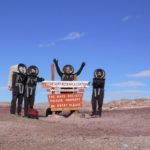
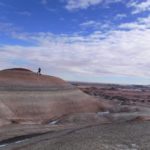
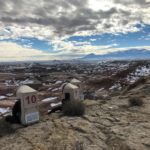
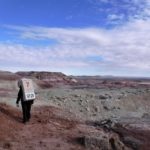
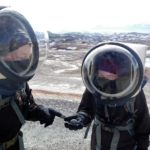
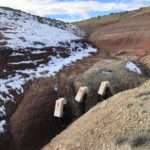
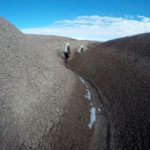

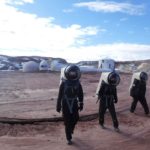
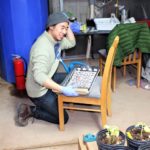
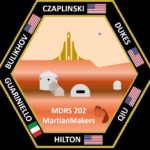
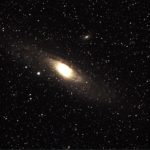
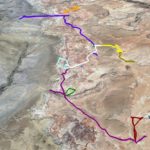
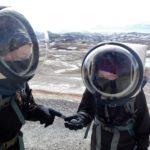
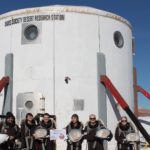

You must be logged in to post a comment.